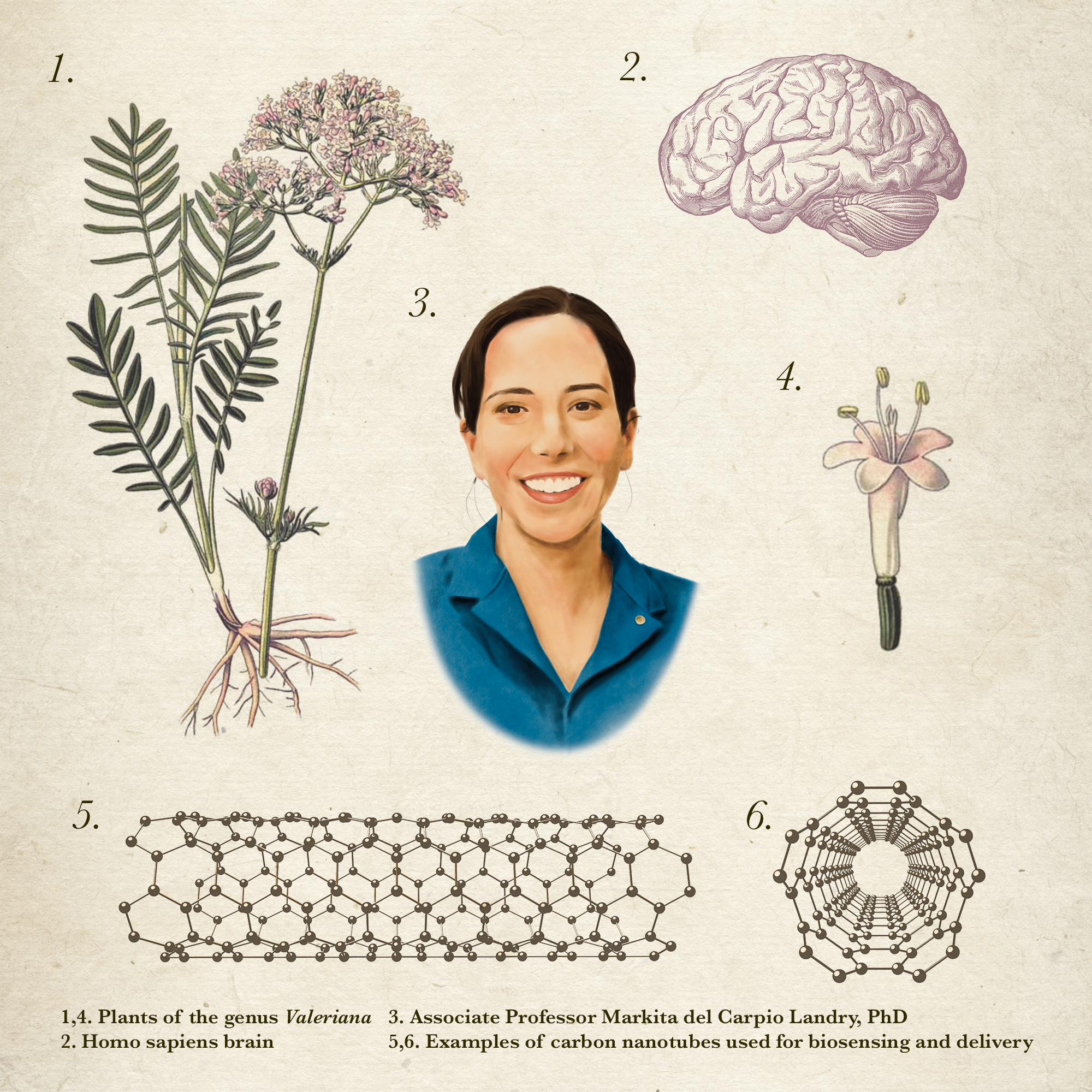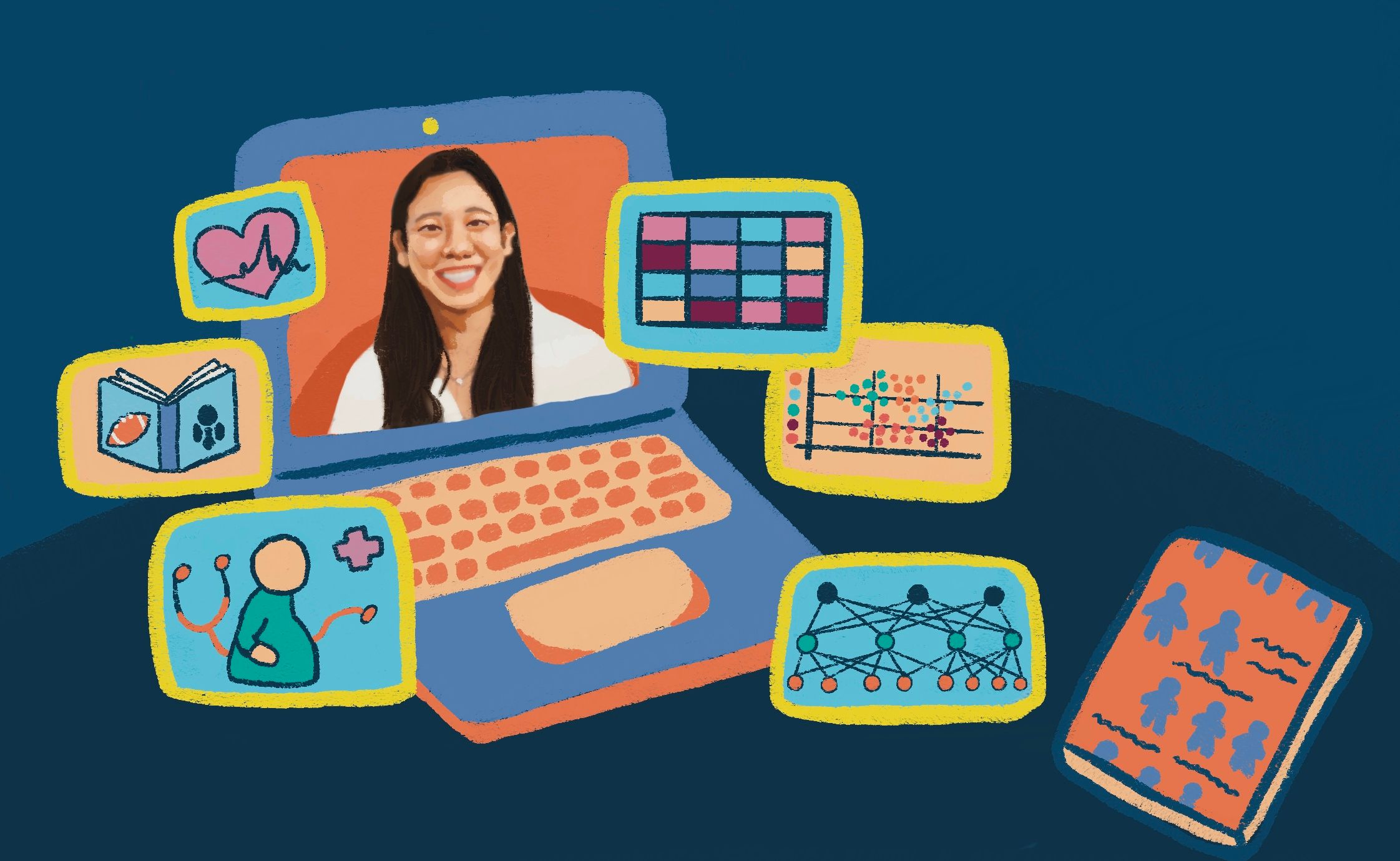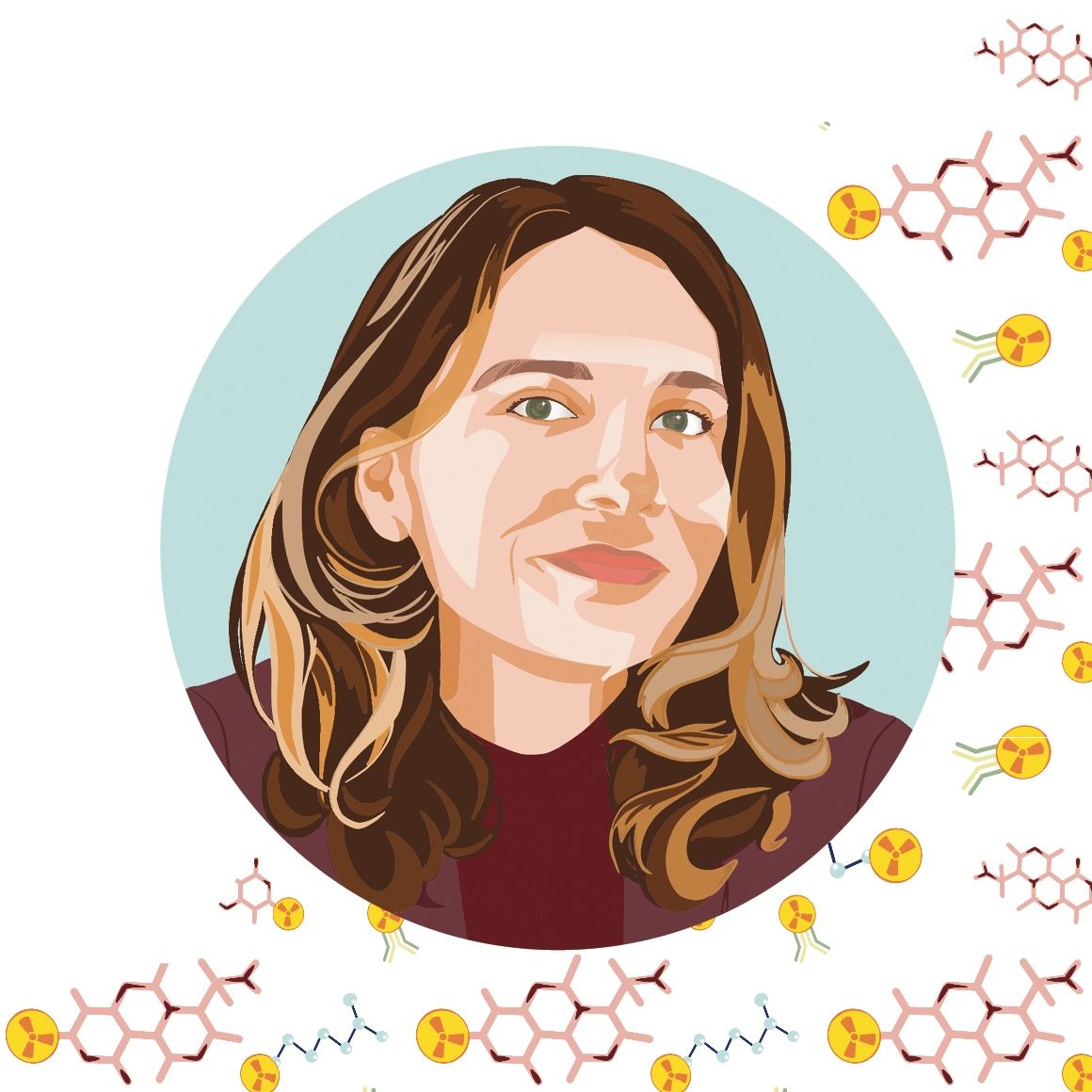Nothing more permanent than the temporary: An interview with Zvezdelina Stankova
May 21, 2021

Zvezdelina Stankova is a teaching professor of mathematics at UC Berkeley and the founder and director of the Berkeley Math Circle, a weekly math circle for elementary, middle and high school students. She found her passion for mathematics as an elementary school student growing up in Bulgaria. She earned her BA and MA in mathematics from Bryn Mawr College and her PhD in mathematics from Harvard. She first came to Berkeley as a postdoc and later returned as a professor. While at Berkeley, she started the renowned Berkeley Math Circle to motivate students to study mathematics. Zvezda has won awards for her impactful work in mathematics teaching and mentoring. In this interview we discuss her thoughts on math education, her teaching and how the pandemic has changed her approach, and her path as a mathematician.
Amanda Glazer (AG): Could you tell me about the Berkeley Math Circle?
Zvedelina Stankova (ZS): That started 22 years ago when I moved to California after my graduate studies at Harvard. I was a postdoc first at the Mathematical Sciences Research Institute (MSRI) and then in the Berkeley math department. The math circle started by coincidence as a temporary experiment. We were trying to advertise math circles, which come from Eastern Europe from over a century ago, to teachers in the local community. MSRI had a one-day conference in April 1998 and we had quite a lot of teachers there, maybe about 60, from middle and high schools. There were sessions on what a math circle does and how you do it organizationally. Then at some moment we decided to poll the audience and see how many teachers were ready to start a math circle the next year. Guess how many hands went up in the air? None! The teachers loved the idea but they were not experienced, and there were little resources for them to start them in their schools. So, right there on the spot I asked eight of my colleagues, “Are you ready to do a demo math circle at UC Berkeley? The teachers will observe and then they’ll have the materials to properly do math circles.” That’s how the math circle started, and it’s still going! The math circle was there for one year originally, but we mushroomed into more and more groups. That’s how we started, and it’s been a very long and winding road, as the Beatles might say. As Russians say, and I’m not Russian, I’m Bulgarian, “There is nothing more permanent than the temporary one.”
We started really concentrating on high school students. It was only one group, and the very first session was in Evans Hall Room 60. We had about 30 students and 30 adults attending. Now, we have about 300 students in the upper level, from grade five through 12, and about 300 students in grades one through four.
There’s a third program that is mostly for middle school, because it’s around middle school age in the United States that families discover that the math education in school is not enough. I’ve been lobbied for many years to teach the mathematics that should be taught in school, but there were no suitable textbooks. I would look at those big, dinosaur textbooks that they use in math in the United States, and I just couldn’t associate with that. I don’t want to have anything to do with that. So, several years ago I started translating a series of Bulgarian textbooks for middle school that were written by one of the former coaches for the Bulgarian team for the International Math Olympiad. His wife was a middle and high school teacher for many, many years, and they made a wonderful series of books. An unexpected but super practical and pedagogically sound feature of these books is that, when you open it anywhere, it’s one lesson on only two pages: summary, theorems, examples. That’s it, only two pages. It’s not 20, 30 pages with a bunch of the same exercises. Every exercise is different. There’s very little repetition even though there’s a lot of review and summary. This reminded me of how we teach in college in that we don’t stop. We build up. It is the pyramid of mathematics. It is very systematic. So, I translated them and we’ve been doing this other program, originally, temporarily, called “Math Taught the Right Way.” It is a smaller program, half the size of the upper division of the Berkeley Math Circle (BMC), so only about 150 kids. All in all, we have about 750 kids each semester in all BMC programs.
AG: What do you think is the biggest issue with the way middle schools are teaching math?
ZS: It’s not just middle school. It’s middle and high school, but it starts already in elementary school. There is a lack of structure and continuity from grade to grade. And because of that, teachers have to repeat and retest. If the same teacher were taking the same students, let’s say, three years in a row, that would be a very different situation. When I was in Bulgaria, we had the same math teacher in elementary school, grades one to three. Then we had the same math teacher from grades four to seven and then from grades eight to 11. I had only three math teachers. Here, the concerns are, “if the teacher is not good enough, I don’t want that teacher to continue with my kids.” True! But then when you start getting different teachers, you have a 50-50 chance anyways whether they are good enough or not, and you also will have no continuity of education no matter what. So, that totally breaks the structure.
In Eastern Europe, education, in particular in math and sciences, was outstanding. Teachers who taught in middle school had to be specialists in that subject. They had to have at least a BA plus a certificate to teach in that area. So, it had to be a mathematician who taught the math class and a biologist who taught the biology class in middle (and high) school.
Another big difference is geometry. In the United States, I consider geometry as the Cinderella in mathematics education. It is pushed in the corner and asked to do the “dirty” business in high school in one year, and then voila! we already have “geometers”! It doesn’t work this way. Geometry intuition is built over the years. You need to develop it every single year. It has to be done on par with algebra. Geometry actually is a more ancient math topic than algebra. In Bulgaria, in grade four, mathematics was already split into two subjects: algebra and geometry. We had two textbooks every grade. We alternated: one day algebra and one day geometry. The two topics were not split, they overlapped and supported each other, but still you studied each of them systematically.
So, when you put all of this together and compare with the “big” US educational map, you start seeing the seeds of an exacerbated math situation already in the US middle school. Because, by and large, you don’t have people who are specialists teaching there. Now, there are some exceptional middle and high school US teachers, and I am working with them. But, in general, either the schools don’t have the resources to hire professionals or there are not enough professionals who are interested to work for middle or high schools. I haven’t done any sort of deep, rigorous research into this. I’m just speaking based on my experiences with hundreds and hundreds of students coming in every year, and their parents, and other teachers and professors. I have gathered a lot of empirical data. And it is very different from my experience back in Eastern Europe.
AG: How do you think middle schools should change how they teach math?
ZS: Well, I cannot resolve or address all of the issues. In my personal way, I have tried to correct them. I have reached out to schools before, and I have not been successful in roughly nine out of 10 cases. The schools have not been interested in introducing something different. Even when my kids were going through school. There was one school though that responded, and that was Tehiyah Day School in El Cerrito, a progressive Jewish school. It was a very friendly school that at the same time wanted to have a rigorous curriculum. The moment I stepped my foot in there, the principal and the math coordinator approached me and said, “What do we do, Zvezda, about the middle school math curriculum?” That was the very first question! I was wowed! The other schools didn’t care about my opinion and these guys were asking me to help from day one! That was the reason I started translating the Bulgarian textbooks, and they implemented them at Tehiyah. In a Jewish school, they taught, translated into English, Bulgarian textbooks! That’s indeed one of the very rare circumstances where the education responded. Unfortunately, it closed down a couple of years ago. I’m not Jewish, no one in my family is Jewish, but there you go, my kids ended up there. My daughter graduated from Tehiyah and she learned Hebrew along the way.
Now I am working with teachers in different schools and some of them have implemented this curriculum. But I don’t think the educational system is really open, at least not nearly as open as we would like, for us to help. What could we do? We decided that we would be a lot more successful if we gave a “temporary” model for what should be done in school, a model we knew was going to be permanent, just as the math circle. The word is spreading.
But the problems in US math education are much wider. I believe that there are three things that have to change. One is how the United States looks at math. The culture has to be changed. I could walk on the street in Bulgaria and ask a random person, “What was your favorite subject in school?” Half of the time you would hear math. Even though they have nothing to do with math anymore in their life. Here, the most common response when someone hears I am a mathematician would be “Wow! I was so bad at math! I couldn’t do this, I couldn’t do that. I was really turned away from mathematics.” And it’s very depressing to hear but that’s a common, common issue here. Another issue revolves around girls in math. I never felt in any way that mathematics was not for girls while I was in Bulgaria. Never! The United States has sent only three girls to the International Math Olympiad so far. I was fortunate to be training the US team when all three girls, in different years, were there. One of the girls, Melanie Wood, was actually faculty at Berkeley last year in the math department. It looks like the environment in Eastern Europe is not restrictive for girls. The whole culture, the way those countries look at math, is whoever wants to, they will succeed. It’s very different.
But the biggest problem is the teacher qualifications in mathematics. To change the teacher qualification and to organize everything is a project that will take a whole generation. It has to embrace the whole society. And it’s a very diverse society, so there won’t be a unique (or any easy) way of doing this.
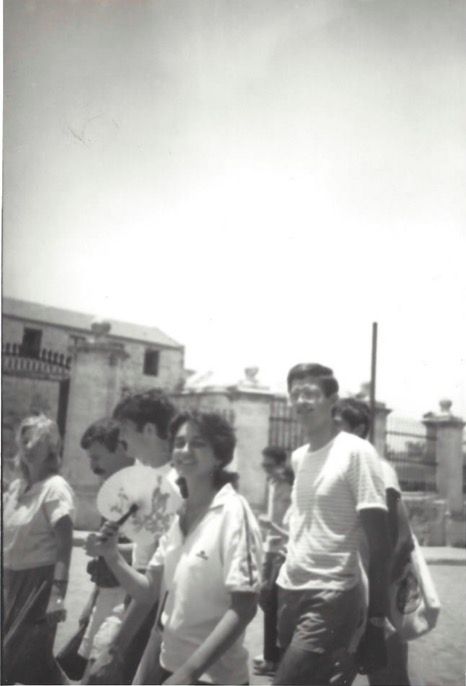 Zvezda at the International Math Olympiad in Cuba, 1987
Zvezda at the International Math Olympiad in Cuba, 1987
AG: When you first came to the US, were you shocked by the state of math education?
ZS: I went to Bryn Mawr College, which is a small women’s college near Philadelphia, and after that, I went to Harvard for my PhD. It is true that I was shocked by certain things that I saw, but I was very happy about other aspects that I was seeing. For instance, even if someone came with insufficient background, I saw in US students more of an adventurous streak: “I’m just going to launch into this and go forward and cross my fingers and hope it’s going to work out fine.” I had a lot of advantages over my classmates at Bryn Mawr, but they also had some advantages over me. In the sense that since they were not previously fit into a systematic way of learning things before, they were more adventurous. They were more willing to jump ahead. And I had to learn that when I came to the United States.
In terms of the mathematics background, yes that was shocking. Even at Harvard when I was teaching undergraduate courses like calculus, once in a while I had to explain how to add fractions or some other material that I thought was fundamental. And it’s not just Harvard, obviously. In any place, no matter where I taught, I met some real challenges in the mathematical backgrounds, some big gaps. And everywhere, there were some very smart students who would tell me, “I wish I had taken the math circle when I was in middle or high school so I would be more advanced now.” Actually, all of these experiences were one of the reasons that I eventually founded the math circle.
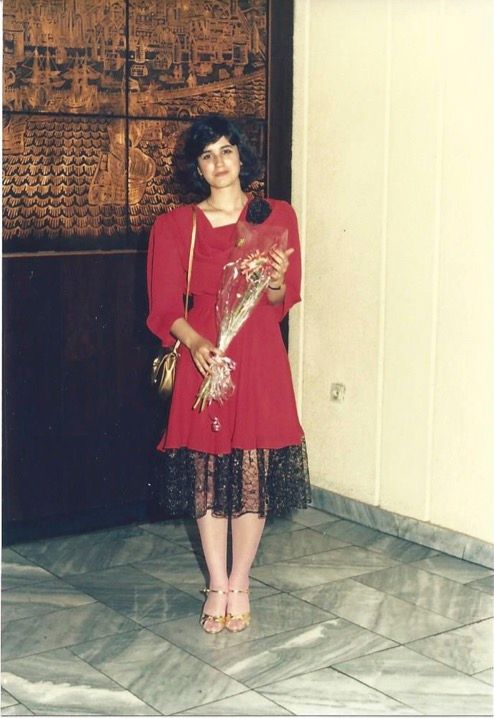 Zvezda in 1988
Zvezda in 1988
AG: Going back to when you were younger in Bulgaria, what first got you interested in math?
ZS: There are few people that can pinpoint that exact place and time. I can. In fifth grade my math teacher called me to the board along with another student and gave us each a problem. That was a very common way to test you. You had to solve the problem on the board and explain it and she would give you a grade. Everyone would know your grade. My problem was about a boat and a ship going up and down a river. I had to create a system of two equations and two unknowns and solve it. I had been getting As in math without really paying any attention: I was riding on my laurels. It was easy and I really had not applied myself. I completely blanked out, and I could not solve my problem. The other girl solved her problem and she went back to her seat. The whole class was given my problem, and they solved it. And then the teacher continued with the next lesson. I was left at the board for the rest of the hour to think. I was crying by the end of class. The bell rang and she called me to talk to me. She said, “Zvezda, you know what grade you deserve.” And I said, “yes I do.” She said, “I will not give it to you if you come tomorrow and show me the correct solution and explain it to me.” So, I went home, crying, and thinking “my goodness, I’m the stupidest person in my class, they all solved my problem and I couldn’t.” My father, who is a ship building engineer, said, “OK, let’s see what that was about.” He helped me, and I realized that it really wasn’t such a hard problem, I simply had not studied well. I then thought I could not be the worst. If the whole class could do it, then I could do it too. The next day, I went to the teacher and explained the problem, and she forgave me and didn’t give me any grade. But then I didn’t stop and I asked her, “Can I join your math circle?” She happened to be the teacher who was running the math circle in my middle school for my grade. And she smiled and she said, “you’re very welcome.” Three months later I won the regional Math Olympiad, to my surprise, to the surprise of my classmates who observed what happened, and to my parents. No one expected it. But it was that teacher. She gave me a second chance, believing that I could solve the problem. Then she gave me a third chance with the math circle. And that was it! I knew that by some weird circumstances I had struck exactly what I should be doing for the rest of my life. It started with this dramatic event, but I did not take it the “wrong way”. A lot of kids here, I guess, would have broken down. But I saw it as a second chance. I have told this story over and over to my students. Even in the university, to those who, let’s say don’t do well on midterm one, I tell them this story and end with, “You don’t know what you can and what you cannot do. Unless you try it, you don’t know.”
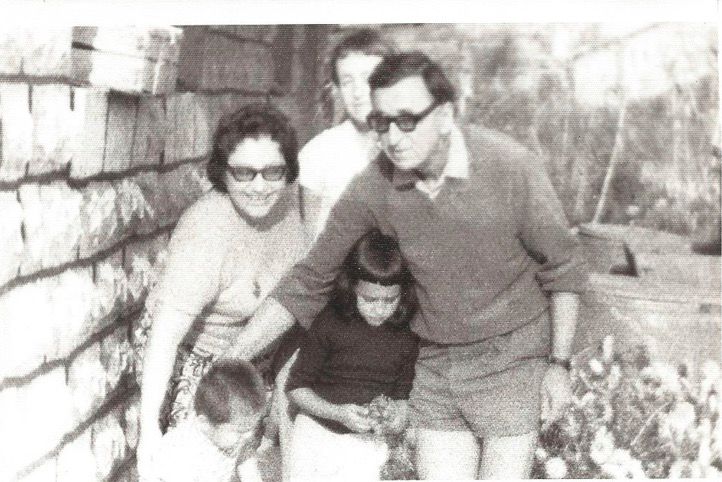 Zvezda in 5th grade with a Rubik’s Cube
Zvezda in 5th grade with a Rubik’s Cube
AG: When did you get a sense that you wanted to go to grad school and become a professor?
ZS: I knew from fifth grade, from that moment. That was it! I cried when I had to drop ballet and piano at some point. And they have always stayed with me. There are other things that I have done over the years. I have taught my kids how to play the piano, and I have been in a ballroom dancing class for several years with them, dancing. But for me, I don’t think I had any choice. It was just done for me, right there on the spot. It’s not always that clean of an event. People make wrong choices and then they have to change. There is no right or wrong way. Unless you teach in Math Taught the Right Way. That’s the only right way! I’m just kidding.
AG: How is your teaching going right now?
ZS: With the online transition, like all of my colleagues, we had to change how we teach. I never changed, though, the interactive nature of my classes. Right now, my classes, I’m told by my students, are more interactive, than their previous in person classes?! They tell me, “it’s one of the most engaging classes that I have ever attended!” That for me is the biggest compliment.
AG: Wow! What are you doing?
ZS: There are a bunch of different modes that the material is given to the students. We have live lectures where I have transcribed the lecture with lots of pictures. I figured out that if I’m going to have this interactive lesson, I can’t cover the same amount of material as in the previous way. I need students to be able to answer questions and to pose their own questions.
So, in addition to the lecture I use “Zoom polls.” The polls are specifically on what we have just done. I can ask them things like “in the proof of this theorem, what did we do?” Some of the questions are funny, to see if the students are really out there paying attention or not. Some are easier, some are tougher. But they really show, even to the top students, whether they really understand in depth or whether they are just following “math recipes”. Even though in the beginning students were fighting me: “Oh, I couldn’t answer any of the questions! this is horrible!” (No, it’s not horrible you are learning!), now it has gotten to the moment where students are waiting for the polls to really understand for themselves how much and how deep they have grasped.
It has had some big advantages to in-person education. Students are seeing lecture recordings directly from my iPad, stuff that I always wanted to tell them but never had time in an in-person class. A lot of students who wanted to see various applications, now can do it. If you are interested in this or that, you can watch this 10 to 20 minute video or that one. Online education has become in some sense more interactive, with more resources, despite the overall online situation, which is very harsh for everyone.
Faculty are really working beyond the call of duty, if there’s any way to define what the “call of duty” is these days. But whatever it is, we are going way, way beyond it in order for the students to be successful. Some professors may be more adept to it than others, but students have to believe that we are really, really trying very hard for them to succeed. And once we come out of this situation, I am this hopeless optimist, we will be much better off, in many ways. We will come out of this stronger, we just have to keep and stick together and lots of good things will come out of it.
AG: What classes are you teaching right now?
ZS: I am teaching Math 110, Linear Algebra, which is the largest math-upper division class I think, and Math 74, which was previously discontinued. It’s called “Transition to Upper Division Math” and lovingly called “Intro to Proofs,” which is what it is. It’s a new course. I completely and entirely redesigned it with one of my math circle instructors and GSI, Roy Zhao. Over the summer he and I developed the whole material from scratch. Students have told me over and over again, I wish I was at the math circle as a kid. Well, now is your chance! We’re going to do it. I think that class has been an eye opener for everyone. We have 11 different math topics from different areas. We obviously had to have geometry, but different types of geometry. Right now, we finally got to real analysis. What students knew before as “Calculus,” is now … Real Analysis. “Let’s revisit theorems that were thrown at you in calculus but you didn’t know what to do with them or how to prove them.” Now we can do it. We are going to attack Group Theory next week, using a very specific example of a game: the 15-puzzle. So, the Math 74 students are going to see a practical application along with the theory.
And the final topic will surprise you: it’s called “Inequalities.” That’s the other Cinderella in the US math education. Inequalities come up way more often than equalities in sciences and in math itself. Not everything can be exactly solved, so you have to approximate. There are way more cases where you have to approximate, in real life or in mathematics. Once you start approximating, you are asking: well, what’s my error? I’m giving you something but how far from the truth is it? That’s an inequality! You want that error to be small or else… roughly, the bridge that you are building is going to fall down! Inequalities are completely ignored except for some very basic stuff that maybe people learn in middle school or the beginning of high school. There are so many different techniques to prove them. They are the basis of calculus. What is the infamous epsilon-delta definition of a limit that is at the foundation of calculus: it’s a bunch of inequalities! Infinitely many inequalities. Because what’s a limit? A limit is an approximation. So, that will be our grand last topic in the proofs class tomorrow!
-------
Amanda Glazer is a graduate student in statistics
Photos courtesy of Zvezdelina Stankova
